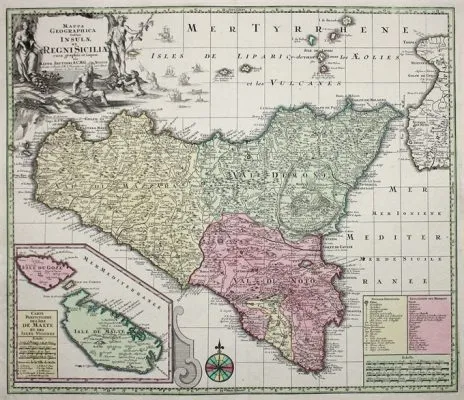Dating back as far as the reign of the Phoenicians some 2700 years ago, the ancient salt pans of western Sicily between Trapani and Marsala have played a hugely important role in the daily life of thousands of Mediterranean and European people for generations.
Along the western coast of Sicily, the production of salt reached its peak in the 1860s, with 31 salt pans producing over 100,000 tonnes per year, exported as far afield as Norway and Russia.
During this period, salt was a vital method of preserving foods and demand for it was high. Today, the salt here is primarily produced for a niche market, such as the gastronomes who swear by the salt’s unique qualities.
Being 100% natural and containing a higher proportion of potassium and magnesium, the flavour of Sicilian salt is enhanced and works exceptionally well with fish dishes.
How do they produce salt in Sicily?
Salt production in Sicily is particularly successful thanks to the hot summers full of sunshine and the relative lack of tide, the Mediterranean Sea rising and falling by only a few centimetres every day. In Sicily’s salt pan region, shallow pools known as saline work as the fields for salt production.
The saline closest to the sea are filled with seawater.
Then, thanks to the climate and occasional winds blowing in from Africa, the water evaporates down to a brine. When this happens, the mixture is continuously thinned by pumping it into saline pools further inland.
This used to be the job of windmills, many of which still stand today, but is now mainly done by industrial pumps. Eventually, a crust of salt crystals begins to form before the mixture dries completely, leaving beautiful white salt behind.
Salt harvesting season lasts from around June to September, during which workers will pile the salt high into the air, which helps with the drying process.
These mounds, sometimes up to three metres high and ten metres long, are then covered in makeshift terracotta tiles to protect them from the rain.
Where can you see Salt Pans in Sicily?
Stagnone, the largest lagoon in Italy, is the main area of salt production, situated just a few miles north of Marsala, and is well worth a visit. Windmills dot the horizon at the Stagnone’s salt pans – a remnant of how salt was once produced, pumping water through the sluice gates in and out of the various basins.
Beneath the road and the basins lie piles of harvested salt covered with terracotta tiles.
There are salt works at Marsala which were founded by the Phoenicians and are still used to make organic sea salt.
If you’d like to learn more about the salt pans of western Sicily while on your holiday, a museum dedicated to the salt industry can be found on the banks of the lagoon midway between Marsala and Trapani, telling the story of how the salt pans developed and functioned throughout the centuries.
The salt pans between Marsala and Trapani are of particular interest for their flora and fauna, since they are a refuge to thousands of migrating birds every year.
The Riserva Naturale Il Stagnone is also home to the island of Mothya, once the most important settlement of the Carthaginians in Sicily.
Alternatively, you can simply take in the spectacular views offered as you walk along the salt pans, which are particularly dazzling at sunset.
Along the old salt road, in front of the Old Salt Mill Museum “Ettore e Infersa” you can see the island of Mozia.
From here, you can take a ferry to join the archaeological site of Mothya. Its ancient Phoenician city still stands, including a massive shipyard and sacrificial altar.
There is a stone road under the sea which the Phoenicians used to transport barrels of wine from the island – where they had established vinyards – to the mainland by horse-drawn cart (in about 3 feet of water): The Sicilians were still using it till the 1950’s.
A visit to both, the islet and the mill is highly recommended. Just pack some pick nick, head to the Stagnone pier and hop on a boat.
 I Leoni di Sicilia – The Lions of Sicily
I Leoni di Sicilia – The Lions of Sicily
 Busiate
Busiate Cous Cous
Cous Cous Cassatelle
Cassatelle
